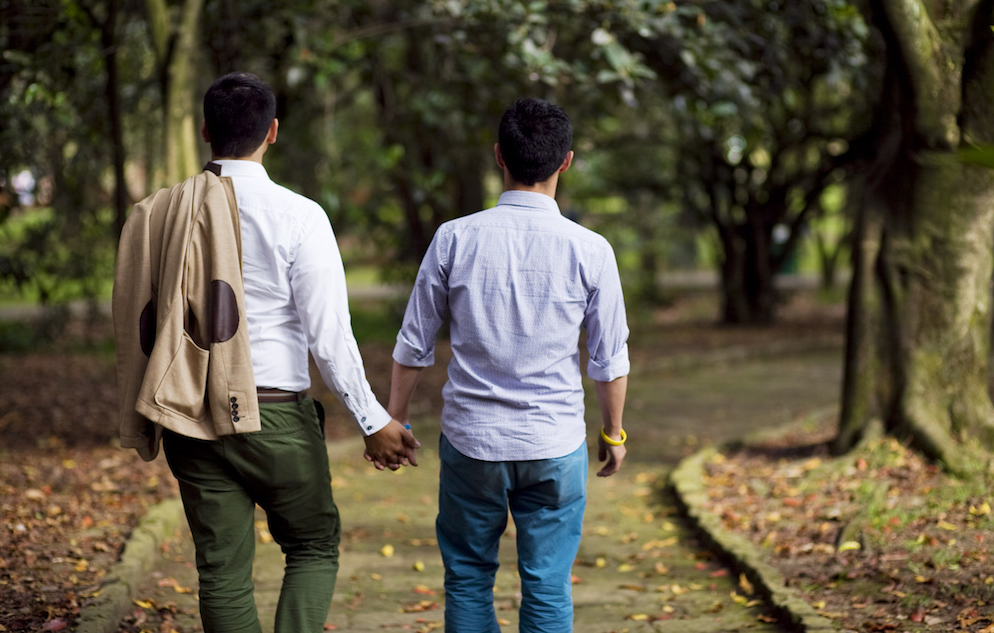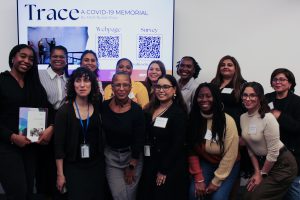October 30, 2017 | CUNY Newswire
Younger gay and bisexual men are recognizing their sexual orientation and coming out a year earlier, on average, than comparable young adults reported a decade ago, according to researchers at The City University of New York Graduate School of Public Health and Health Policy and Hunter College’s Center for HIV/AIDS Educational Studies and Training.
“What we’re seeing in these data is emblematic of increasing social acceptance of LGBT people in the U.S. in general,” lead author Christian Grov, professor at the Graduate School of Public Health, said in an interview. “In 2005, we were talking about Ellen DeGeneres and ‘Will and Grace’ on TV. Now we have Lady Gaga; openly gay characters in ‘Star Trek Discovery,’ ‘Orphan Black’ and the Oscar-winning best picture ‘Moonlight’; the legalization of same-sex marriage; and Barack Obama being the first sitting president to come out in favor of LGBT rights. It’s a whole new world.”
The study, “Birth Cohort Differences in Sexual Identity Development Milestones among HIV-Negative Gay and Bisexual Men in the United States,” appears in The Journal of Sex Research. Grov’s co-authors are Hunter College faculty members H. Jonathon Rendina, assistant professor of psychology, and Jeffrey T. Parsons, Distinguished Professor of Psychology, both of whom conduct their research at the Hunter College center.
This paper, based on 2015 data collected in an online survey, replicates and expands upon research that Grov, Parsons and others published in 2006. That study has been cited 300 times, making it a Google “classic paper” that is among the top 10 referenced in the field of sex and sexuality.
The new study of more than 1,000 gay and bisexual men from across the country includes questions on their coming-out process, which involves four sexual identity development milestones that generally occur in this order: awareness of sexual attraction to the same sex, self-identification as gay or bisexual, disclosure of this sexual identity to others, and having consensual sex with someone of the same gender.
The researchers found that when looked at as a whole, the age when men first felt sexually attracted to someone of the same gender was independent of birth cohort (age group); the median age was 11 to 12, about the same as initial heterosexual attraction. However, the authors also used advanced statistical techniques to identify subgroups of men who differed based on the patterns in their ages of achieving the four sexual identity development milestones.
The authors identified three distinct groups. The majority (84 percent) noticed same-sex attraction around the onset of puberty (i.e., around age 10) and progressed to self-identification, same-sex sexual activity, and coming out—all in that order and all during adolescence. The rest felt same-sex attraction during their teens (ages 12.5 to 18.0), but achieved the remaining milestones later in life; for 13 percent, this was during early adulthood and for 3 percent it was in middle adulthood. There were more men from the older cohorts within the latter two groups who passed the milestones at later ages than men from the younger cohorts, which Grov suggests reflects the tighter social strictures under which older men grew up.
The pattern of reaching the sexual identity development milestones has been stable over time within temporally matched age cohorts. However, the study says, the youngest group of gay and bisexual men (age 19 to 25 in 2015) reported passing milestones roughly one year earlier, on average, than men whom they sampled from that age group in 2003–2004.
Grov said in the interview: “If you look at guys in their 50s vs. their 20s, they’ll say the same age when you ask ‘When did you first realize you were gay,’ but the older cohorts often were living in the closet until they were financially independent or out of college, because being out as gay had very negative implications decades ago.”
The study has caveats: “Admittedly, we recognize that the cohort groupings between the 2006 study and the present study do not match up identically and there are some key sampling differences between the present study and the 2006 study (i.e., that study included HIV-positive participants and was geographically limited to men in urban areas).” As a result, the researchers call for ongoing monitoring of generational differences in passing sexual identity milestones.
The City University of New York is the nation’s leading urban public university. Founded in 1847, the University comprises 24 institutions: 11 senior colleges, seven community colleges, William E. Macaulay Honors College at CUNY, CUNY Graduate Center, CUNY Graduate School of Journalism, CUNY School of Law, CUNY School of Professional Studies and CUNY Graduate School of Public Health and Health Policy. The University serves more than 272,000 degree-seeking students. College Now, the University’s academic enrichment program, is offered at CUNY campuses and more than 400 high schools throughout the five boroughs. The University offers online baccalaureate and master’s degrees through the School of Professional Studies.
Please click here to view the original article.




